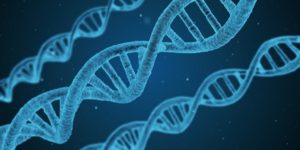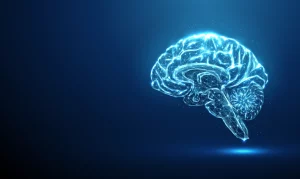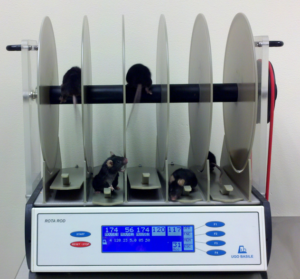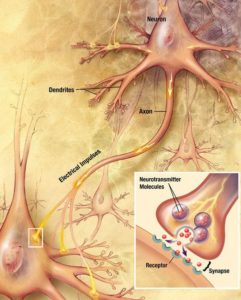
Snapshot: What is prosody?
Speech not only consists of the words we say, but how we say them. That “how” is what is called prosody: the pitch, loudness, and timing of speech. The term Read More…
Bill Nye the Science Guy is speaking at the 2024 Annual Ataxia Conference! Register now. LEARN MORE!
A collection of resources for individuals and families affected by Episodic Ataxia (EA).
Episodic Ataxia is one type of Ataxia among a group of inherited diseases of the central nervous system. Episodic Ataxia may be the result of genetic defects that lead to impairment of specific nerve fibers that carry messages to and from the brain to control movement of the body. For complete information about symptoms, diagnosis, and treatment of Ataxia, visit our What is Ataxia? page. This page contains NAF’s resources that are specific to Episodic Ataxia.
Sign up for our mailing list to stay up-to-date on Ataxia news.
Presented by Anhar Hassan, MBBCh, BAO, FRACP, FRCPI, FAAN
This webinar covers the causes and symptoms of Episodic Ataxia, the typical diagnostic journey for those affected, and what to expect for clinical care.
Presented by Lorenzo Cingolani, PhD
This webinar covers how Episodic Ataxia is studied and gives an overview of the current state of research and drug development for the disease.
Episodic Ataxia is clinically characterized by attacks of Ataxia with a clear onset of resolution. There are now eight recognized episodic Ataxia syndromes, numbered 1-8, in addition to late-onset episodic Ataxia. The genes are known for EA1, EA2, ES5, and EA6. The best characterized are EA1 and EA2, the others are exceptionally rare and largely defined by single families. Episodic Ataxia is considered a rare disease.
Physicians may use different terms when diagnosing episodic Ataxia. The symptoms, duration, severity, and triggers of ataxic attacks differ, usually with periods of normal function in between.
Episodic Ataxia includes:
Symptoms of Episodic Ataxia can vary considerably from family to family and from individual to individual within the same family. The most common symptoms are episodes of Ataxia (difficulty with balance and coordination) and unclear speech (dysathria) interspersed with periods of normal or nearly normal neurological function. The attacks are usually brought on by exercise, excitement, rapid changes in posture or, in some cases, high-carbohydrate meals. The attacks of EA1 are usually associated with muscle twitching and are generally brief, lasting for only a few seconds or minutes.
Symptoms of EA1 may include incoordination and disturbed balance with involuntary movement or rippling of the muscles (myokymia) and/or muscle spasms (myotonia). There may be twitching or tremor in the face and hands. Myokymia may occur between attacks.
In EA2, the attacks last longer, ranging from 30 minutes to six hours. Symptoms often include muscle weakness, instability in the torso, and possibly dizziness and fatigue. Involuntary eye movement (nystagmus) is common between episodes. Muscle twitching generally is not a part of EA2, stiffness or dystonia may be a feature.
Attacks of Episodic Ataxia with paroxysmal choreoathetosis and spasticity generally last about 20 minutes and involve imbalance and uncoordinated movement; stiffness or a withering appearance (dystonia) in arms, legs, and/or toes; and a burning, tingling sensation in the legs and around the mouth.
Double vision and/or headache are possible. In some cases, there may be involuntary muscle contractions and temporary paralysis in the lower body and legs persisting between episodes. In addition to stress, excitement, and exertions, attacks may be brought on by alcohol or fatigue.
Episodic Ataxia most typically presents itself from early childhood to early adulthood. Though there is no cure at this time, in some cases symptoms abate or disappear in later life, sometimes as early as young adulthood.
In other cases, symptoms continue into advanced years. The condition does not shorten lifespan and symptoms often can be reduced or eliminated with medication.
Episodic Ataxia is a genetic disorder which means that it is an inherited or heritable disease. The abnormal gene responsible for this disease is passed along from generation to generation by family members who carry it. The genetic defect may also arise spontaneously. Genetic disease occur when one of the body’s 20,000 genes does not work properly.
Episodic Ataxia is an autosomal dominant disease which means that it is inherited from only one parent. Two copies of each gene are inherited, one copy from the mother and one from the father. Offspring who inherit one ataxia-causing gene will develop episodic Ataxia.
Offspring who inherit two normal copies of the gene will never develop Episodic Ataxia, and will pass normal genes on to their children. Each child of a parent with an autosomal dominant disease has a 50 percent chance of inheriting a defective gene and thus being affected with the disease. Males and females are equally likely to be affected.
A neurologist is often the most helpful specialist in diagnosing episodic Ataxia. A thorough neurological examination can determine whether a person has symptoms typical of Episodic Ataxia. Besides the neurological exam, the neurologist will evaluate family history, patient history, and possibly electromyography (EMG) findings.
Mutations in the EA1 and EA2 genes are almost always found in those with early onset of discrete and recurrent attacks of Ataxia. Genetic testing is available on a research basis at several laboratories around the world. There is also ongoing effort to identify defects in new genes that can cause Episodic Ataxia.
NOTE: A different mutation in the EA2 gene on chromosome 19 is responsible for Spinocerebellar Ataxia type 6 (SCA6), and symptoms of EA2 and SCA6 can be similar, especially in the early stages of SCA6. Defects in EA2 gene may also cause familial hemiplegic migraine type 1 (FHM1).
Some people with EA2 develop a progressive Ataxia in addition to their episodic attacks. DNA testing for SCA6 is available and can accurately detect the genetic abnormality that causes SCA6.
SCAsource provides Ataxia research news, directly from researchers to the Ataxia community. Visit SCAsource to see their full collection. Here is a collection of articles relevant to Episodic Ataxia.

Speech not only consists of the words we say, but how we say them. That “how” is what is called prosody: the pitch, loudness, and timing of speech. The term Read More…


Most things about you are written in your genes: from the colour of your eyes, whether you are lactose intolerant, to if you have a higher chance of getting certain Read More…


Written by Dr. Judit Pérez Edited by Dr. David Bushart A new case report describes how a new mutation in the CACNA1A gene causes ataxia with seizures. Genes and their Read More…


Written by Anna Cook Edited by Dr. Monica Banez Researchers successfully use an existing multiple sclerosis drug to improve performance in an SCA6 mouse model Spinocerebellar ataxia type 6 (SCA6) Read More…


One of the most important features of neurons (Purkinje cells, for example), is that they are capable of electrical communication. Think of the last time you saw a TV intro Read More…


Purkinje cells are important neuronal cells located in the outer layers of the cerebellum. The cerebellum is part of the brain that is primarily known for controlling sense of balance Read More…
Our generous donors help us fund promising Ataxia research and offer support services to people with Ataxia. Your gift today will help us continue to deliver on our mission to improve the lives of persons affected by Ataxia.
Join for FREE today! Become a part of the community that is working together to find a cure. As a member you will receive access to the latest Ataxia news with our e-newsletter and Generations publication.

